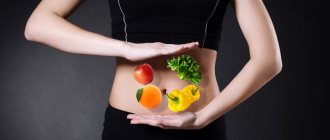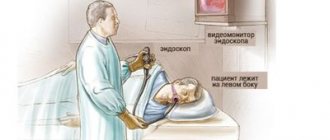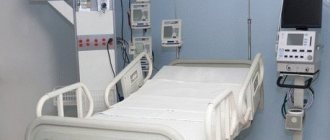Foodborne illnesses
Food poisoning is caused by a large group of bacteria ; the main pathogens are Staphylococcus aureus, Proteus vulgaris, Bacillus cereus, Clostridium perfringens, Clostridium difficile, representatives of the genera Klebsiella, Enterobacter, Citrobacter, Serratia, Enterococcus, etc. The pathogens are widespread in nature, have pronounced resistance and are able to reproduce in environmental objects. All of them are permanent representatives of the normal intestinal microflora of humans and animals. Often, it is not possible to isolate the pathogen from sick people, since the clinical picture of foodborne toxic infections is mainly determined by the action of microbial toxic substances. Under the influence of various environmental factors, opportunistic microorganisms change biological properties such as virulence and resistance to antibacterial drugs. Epidemiology The source of infection is various animals and people. Most often these are persons suffering from purulent diseases (felons, tonsillitis, furunculosis, etc.); Among the animals there are cows and sheep suffering from mastitis. All of them secrete pathogens (usually staphylococci) that enter food products during processing, where bacteria multiply and accumulate. Both patients and carriers of pathogens pose an epidemiological danger. The infectious period of patients is short; Regarding the timing of bacterial carriage, the data are contradictory.
The causative agents of other toxic infections (C. perfringens, B. cereus, etc.) are released by people and animals into the external environment with feces. The reservoir of a number of pathogens can be soil, water and other environmental objects contaminated with animal and human excrement.
The transmission mechanism is fecal-oral, the main route of transmission is food. For foodborne toxic infections caused by opportunistic bacteria to occur, a massive dose of the pathogen or a certain amount of time is required for its reproduction in food products. Most often, foodborne toxic infections are associated with contamination of milk, dairy products, canned fish in oil, meat, fish and vegetable dishes, as well as confectionery products containing cream (cakes, pastries). The main product involved in the transmission of clostridia is meat (beef, pork, chicken, etc.). The preparation of certain meat dishes and products (slow cooling, repeated heating, etc.), the conditions for their sale, contribute to the germination of spores and the proliferation of vegetative forms. Various environmental objects participate in the relay race of the pathogen: water, soil, plants, household items and patient care items. Products containing staphylococcal and other enterotoxins do not differ from benign ones in appearance, smell and taste. Diseases occur in the form of sporadic cases and outbreaks. They are more often recorded in the warm season, when favorable conditions are created for the proliferation of pathogens and the accumulation of their toxins.
People's natural sensitivity is high. Usually, most people who eat contaminated food get sick. In addition to the properties of the pathogen (sufficient dose, high virulence), the development of the disease requires a number of contributing factors from both the microorganism and the macroorganism (reduced resistance, the presence of concomitant diseases, etc.). Individuals at risk are more susceptible: newborns, weakened individuals, patients after surgery or those who have been receiving antibiotics for a long time, etc.
Basic epidemiological signs. Diseases caused by opportunistic microorganisms are widespread. Outbreaks are familial in nature or when food is contaminated in catering establishments, diseases can be dispersed throughout the population. The number of cases determines the number of people who consumed the contaminated food product and can vary significantly. In particular, group diseases are very common among passengers of sea vessels, tourists and members of children's and adult organized groups. Outbreaks are usually explosive in nature. No differences in socio-age or gender composition were identified. Diseases are more often recorded in the summer. Depending on the type of food product, children or adults predominate among the sick. In addition to food outbreaks, household outbreaks are also possible, in most cases occurring in hospital settings. Outbreaks of nosocomial infections caused by C. difficile are associated with long-term use of antibiotics. During water outbreaks as a result of fecal contamination, other pathogens of acute intestinal infections are also released along with opportunistic microorganisms.
Symptoms
The duration of the incubation period for food poisoning varies from half an hour to a day. In most cases, from the moment the contaminated product enters the body until the first symptoms appear, 4-6 hours pass. This is due to the high toxicity of exotoxins.
Symptoms of food poisoning caused by various pathogens differ little from each other. In all cases, IPT is characterized by an acute phase of the onset of the disease. Dizziness, heaviness in the epigastric region and nausea occur, followed by a reflex release of stomach contents.
Vomiting is always repeated, exhausting the patient. There is no presence of blood or mucus in the vomit. Severe pain and cramping in the abdomen are cramping in nature. Almost immediately after the first attack of vomiting, diarrhea and flatulence begin. Defecation, also repeated, accompanied by tenesmus (painful spasms of the rectal sphincter).
Pathological impurities (blood, mucus, pus) in excrement are not typical for toxic infection. In the first hours of the disease, the temperature rises to febrile values (38-39℃). Chills, body aches, muscle cramps appear, and the legs become cold.
Symptoms of acute intestinal infection
External manifestations are:
- pallor, cyanosis (blueness) of the nasolabial triangle;
- gray coating on the tongue;
- cold sweat.
Due to the rapid loss of fluid through excrement and vomit, dehydration (dehydration) develops. The skin becomes dry, the amount of urine produced decreases (prerenal oliguria). Patients feel severe weakness, cephalgic syndrome (headache), dry mouth.
During palpation examination, there is no muscle tension in the abdomen. There is pain in the umbilical region, in the upper and middle parts of the abdomen under the ribs. Symptoms are complemented by disturbances in heart rhythm (more often, increased heart rate), frequent deep breathing (tachypnea).
Blood pressure levels decrease. In case of severe intoxication, short-term loss of consciousness and vascular insufficiency may occur. Although the symptoms are generally similar, there are some features characteristic of infection with a certain type of bacteria:
- salmonella – prolonged pain in the intestines, severe course, risk of complications;
- proteus - a sharp stench of excrement;
- clostridia - stabbing pain in the abdomen, blood may be present in the stool, hyperthermia may be absent;
- staphylococcus – accelerated onset (incubation period less than an hour), cyanosis and convulsions can occur at the very beginning of the disease.
In most cases, toxic infection is accompanied by stages 1 and 2 of dehydration. A dangerous complication of bacteriotoxicosis is the third and fourth stages of dehydration. Stage 3 symptoms include:
- frequency of stool and vomiting more than 20 times;
- pronounced thirst;
- renal oliguria;
- sunken eyeballs;
- tachypnea;
- cyanosis (acrocyanosis) of the skin not only in the nasolabial area;
- pulse 120 beats/min;
- blood pressure 100/60.
In the fourth stage, the listed symptoms intensify. The result can be ITS (infectious-toxic shock) and coma. In this condition, the patient requires emergency assistance from a medical team.
What is food poisoning?
Food poisoning
– this is a disruption in the functioning of the digestive system, caused by the entry of pathogenic flora into the body. Its source is food and drinks. Moreover, in some people the symptoms of poisoning develop acutely, while in others it can be expressed in a mild disorder of digestive function.
Food poisoning should not be tolerated. In severe cases, it can even lead to the death of a person. Most often this happens after eating low-quality fish or poisonous mushrooms. Disturbances in the functioning of the gastrointestinal tract can be caused by bacteria, viruses, fungi, parasites and poisons (toxins).
Food poisoning during pregnancy: what to do?
Pregnant women are sensitive to their own health, but they cannot be 100% insured against food poisoning. If food intoxication does occur, you need to consult a doctor, as it poses a threat not only to the mother, but also to the child. Under the influence of poisons, the nutrition of the fetus will deteriorate, and the situation will be aggravated by the leaching of useful minerals, vitamins and salts. When the poisoning is acute, there is a serious threat to the life of the mother and child, and a miscarriage may occur.
Doctors try not to provoke vomiting in a pregnant woman, as this can cause an increase in uterine tone. She is given as much water as possible to drink so that toxins leave the body through urine. After bowel movements, it is suggested to take the sorbent. To prevent dehydration from developing, rehydration medications should be used.
After relief of the main symptoms, the woman will need to follow a gentle diet, but she should not starve. The child will be in dire need of nutrients, so giving up food will not be possible at all.
It is very dangerous if mushroom poisoning occurs. Their poisons have the ability to cross the placental barrier. They can harm the baby directly. Therefore, during pregnancy it is necessary to avoid eating mushrooms, raw fish and rare steaks.
Basic nutrition rules
The purpose of therapeutic nutrition for toxic infection is to restore electrolyte balance and mucous membranes damaged by exotoxins. Diet principles:
- gradual increase in portions;
- eating every 3 hours;
- drinking regime – 2-2.5 l/day;
- culinary processing of products - boiling, steaming, stewing;
- food temperature – 15-50 ℃;
- limiting salt to 6 g/day.
In the first days, it is advisable to grind food.
Sample Product Table
| Recommended | Forbidden |
| Weak fish or chicken broth pureed vegetable soups steamed cutlets from lean fish, chicken, turkey pureed porridge steamed omelet, soft-boiled eggs cottage cheese, natural yogurt biscuits, crackers unsweetened jelly, compote, jelly milk | Bread, baked goods fatty fish and meats canned fish and meat mushrooms raw vegetables, fruits, berries sausages and smoked foods legume dishes fast food, dumplings any sauces and seasonings pickles and marinades packaged juices, soda, bottled tea coffee |
Daily nutrient intake for adults:
- proteins – 80-90 g (75% animal proteins);
- fats – 80 g (25% – vegetable fats);
- carbohydrates – 250 g.
Total energy value – 2000 kcal.
Food poisoning during breastfeeding
If a nursing woman experiences mild poisoning, it will not harm the nursing baby. Bacteria will not be able to enter his body. Therefore, even if the body is intoxicated, experts insist on continuing breastfeeding.
However, in case of bacterial poisoning, the baby cannot be breastfed, since the woman needs to take medications. Many of them can harm the baby's health. Therefore, you need to consult a doctor. Most likely, the baby will need to be switched to artificial feeding during treatment. During this period, the woman will need to express milk so that it does not disappear. After completing therapy, you can start breastfeeding again.
When serious drugs are not prescribed, you can breastfeed your baby. In this case, it is necessary to carefully observe the rules of hygiene.
Severity of the current
According to statistics, 75% of PTI are tolerated in a mild form. Prolonged course is most often due to untimely medical care. The risk of complications occurs in young children and older people.
Classification of toxic infection by severity
| Criteria and symptoms | Lightweight | Average | Heavy |
| Weight loss | 1-4% | 4-6% | 7-10% |
| Frequency of diarrhea | up to 10 times | up to 15 times | 20 or more |
| Frequency of vomiting | up to 5 times | up to 10 times | 20 or more |
| Body temperature | febrile (38-39℃) | febrile (38-39℃) | pyretic (39-41℃) |
| Dehydration | Stage 1-2 | Stage 2 | Stage 3 |
| Intoxication | mild | moderately expressed | pronounced |
| Pulse | norm | up to 100 beats/min. | up to 120 beats/min. |
Reference! In uncomplicated cases, recovery occurs on the third day.
Treatment
The decision to hospitalize is made based on the severity of symptoms and the results of differential diagnosis. In most cases, patients receive therapy on an outpatient basis. With mild intestinal damage, the patient must comply with bed rest and drinking regime.
The amount of liquid should not be less than 2.5-3 liters for adults. You should drink a few sips of pure water or a solution of the drug Regidron every quarter of an hour, which restores the water-electrolyte balance. The pediatric dose of fluid is calculated by weight (from 150 to 175 ml per kg of body weight).
Important! No other drinks except water and weak sweet tea should be consumed.
Treatment of moderate foodborne toxic infection begins with repeated gastric lavage (with a weak solution of potassium permanganate, saline solution, 2% sodium bicarbonate solution, boiled water). The next stage is enemas and the use of sorbents that bind and remove toxins remaining in the body.
You can use Enterosgel, Polysorb, Activated carbon. Just as with mild cases, drinking plenty of fluids (rehydration) is indicated to replenish water reserves. During the recovery period, patients are prescribed a gentle diet. Severe PTI is treated in a hospital setting.
Results
Bacteriotoxicosis or food toxicoinfection refers to infectious intestinal diseases. Poisoning occurs as a result of eating foods contaminated with exotoxins - poisons produced by the bacteria staphylococcus, proteus, clostridia and other conditional pathogens.
The infection is characterized by an acute and short-term course, the prognosis in 75% of cases is favorable. Recovery occurs on the third day. In severe cases, the danger is dehydration of the body with the possible development of infectious-toxic shock.
Diagnostics
Diagnosis is based on general symptoms and connection with the consumption of a contaminated product. To clarify the diagnosis of food poisoning, it is necessary to examine a sample of feces and a fragment of a suspicious product.
For differential diagnosis, bacteriological culture of vomit and feces is carried out on nutrient media. This is necessary to exclude salmonellosis, escherichiosis, dysentery and other intestinal infections. Serological testing is carried out if cholera is suspected.
Changes in CCA (general clinical analysis) of blood during foodborne toxic infection:
- moderate increase in leukocytes (leukocytosis), the leukocyte formula has a “shift to the left”, that is, the number of band neutrophils is increased;
- an increase in hemoglobin and red blood cell content is a sign of dehydration;
- moderate increase in ESR;
- exceeding the percentage norm of hematocrit.
When measuring the relative density of plasma, an increase in standard values is observed. A general urine test reveals protein.





